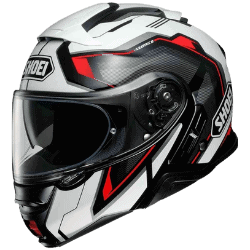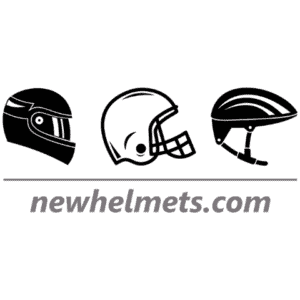Wind noise can be a significant issue when riding a motorcycle, but there are a few ways to reduce or eliminate it. Here are a few ways to deal with unbearable wind noise:
- Adjust your riding position: Changing your riding position can significantly impact wind noise. Try switching positions until you find one that minimizes it.
- Use a wind deflector: Some motorcycles have wind deflectors that can be added to the fairing or windshield to help redirect the wind around the rider and reduce wind noise.
- Use a windscreen: A windscreen can help to reduce wind noise by directing the wind over the rider’s head instead of into their face.
- Use a chin curtain or neck roll: These attachments can help to reduce wind noise by blocking the wind from entering the bottom of the helmet.
- Use earplugs or noise-canceling headphones: These can help to reduce wind noise while riding by blocking or reducing the amount of wind entering the ears.
- Wear a full-face helmet: A full-face helmet can also help to reduce wind noise by providing a barrier between the wind and the rider’s face.
The effectiveness of these methods will vary depending on the specific motorcycle and riding conditions, so it may be necessary to try a few different approaches to find the one that works best for you.
As mentioned, the right helmet is one of the best ways to combat distracting wind noise.
Here are 5 of the quietest motorcycle helmets
Here are five of the best quiet motorcycle helmets currently available on the market:
- Shoei Neotec 2: This helmet is known for its superior noise reduction and aerodynamic design, making it one of the quietest helmets on the market.
- Bell Qualifier DLX: This helmet is designed with a built-in noise-canceling system and a chin curtain, which helps to reduce wind noise.
- HJC RPHA 70: This helmet is aerodynamically designed to reduce wind noise and features advanced CAD (computer-aided design) technology.
- AGV Sportmodular: This helmet features a wind tunnel-tested design that helps reduce wind noise, a built-in sun visor, and a ventilation system that helps keep the rider cool.
- Scorpion EXO-GT920: This helmet features an aerodynamic design and a removable neck roll that helps to reduce wind noise. It also has a built-in sun visor and a ventilation system that helps to keep the rider cool.


Please note that the quietness of a helmet will depend on the specific model and the rider’s experience. These helmets are known for their noise-reduction capabilities and are highly rated by users and experts.
On the other hand, if you have already purchased a helmet, that feels noisy to you. There are methods you can use to reduce it.
How to soundproof a helmet
Soundproofing a helmet is a process that can reduce the amount of wind and road noise that enters the helmet, making it more comfortable to wear and improving the overall riding experience. Here are a few methods to soundproof a helmet:
- Add a noise-canceling earpad: Some companies make earpads that can be added to a helmet to reduce noise. These earpads are made of materials that help to block out wind and road noise.
- Use a helmet liner: A helmet liner is a soft, padded material that can be placed inside the helmet to help reduce noise.
- Use soundproofing foam: You can also use soundproofing foam, which can be cut and shaped to fit the inside of a helmet. The foam absorbs sound and reduces the amount of noise entering the helmet.
- Apply noise-canceling paint: Some companies make noise-canceling paint that can be applied to the inside of a helmet. The paint works by absorbing sound and reducing the amount of noise that enters the helmet.
- Use a wind deflector: Some helmets come with a wind deflector, which helps to reduce wind noise by redirecting airflow around it.
These methods, when implemented correctly, can help reduce wind and road noise, but they may not eliminate it. Additionally, they may also affect the ventilation and comfort of the helmet. It’s best to try different methods and see what works best for you.
Is there any new technology that can help soundproof my helmet and protect my hearing?
There are a few new technologies that can help to soundproof a motorcycle helmet and protect your hearing:
- Active noise-cancellation technology: Some manufacturers are now incorporating active noise-cancellation technology into helmets. It utilizes microphones and speakers to detect and cancel out wind and road noise, providing a quieter riding experience.
- Bluetooth integrated technology: Some helmets come with integrated Bluetooth technology, which allows the rider to listen to music or take phone calls. This can help to reduce wind and road noise by providing a source of audio distraction.
- Noise-canceling materials: Some manufacturers now use noise-canceling materials inside helmets, such as acoustic foam, to help absorb and reduce wind and road noise.
- Aerodynamic design: Some helmet manufacturers are using advanced computer-aided design (CAD) technology to create helmets that are more aerodynamic and can reduce wind noise.
It’s important to note that these technologies are still relatively new and not yet widely available, and they may also affect the ventilation and comfort of the helmet. Always check the helmet’s specifications and read reviews to find the best option.
How can I protect my hearing when riding a loud motorcycle?
Riding a loud motorcycle can harm your hearing over time, so it’s essential to protect your ears while riding all of the time. Here are a few ways to protect your hearing when riding a loud motorcycle:
- Wear earplugs: Wearing earplugs can help to reduce the amount of wind and road noise that enters your ears. Different earplugs are available, including disposable foam types and reusable earplugs with a noise reduction rating (NRR) of at least 25 decibels. Here is a list of the best Motorcycle earplugs from Motorcycle.com
- Wear noise-canceling headphones: Some riders prefer to wear noise-canceling headphones while riding to reduce the amount of wind and road noise.
- Wear a full-face helmet: A full-face helmet can help reduce the amount of wind and road noise that enters your ears and provide additional protection for your head.
- Limit the time you spend riding at high speeds: The louder the noise, the more damage it can do to your hearing, so try to limit the time you spend riding at high speeds.
- Get your hearing checked regularly: It’s also essential to check your hearing regularly, especially if you’re a frequent rider. If you notice any changes in your hearing, see an audiologist or an ear, nose, and throat doctor for an evaluation.
Use earplugs, noise-canceling headphones, and full-face helmets together for maximum protection. Remember that loud noise over a prolonged period can damage your hearing, so it’s critical to take steps to protect your ears.


